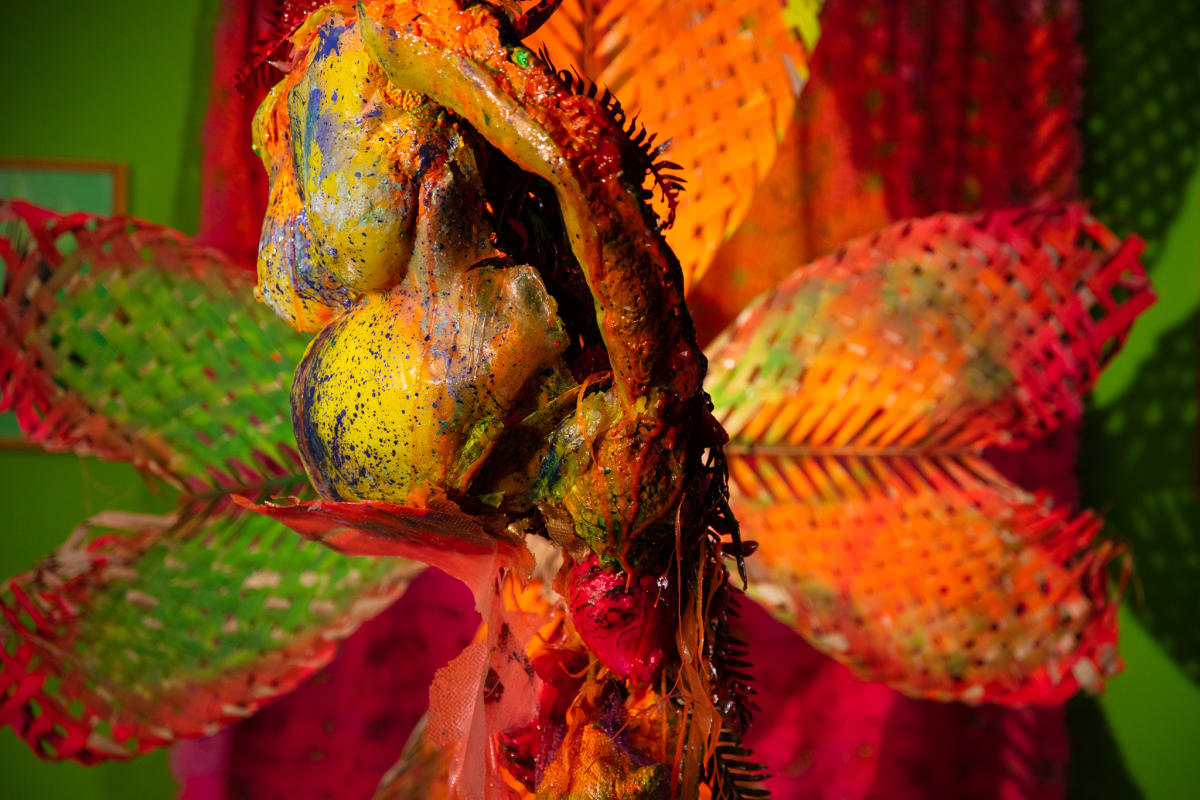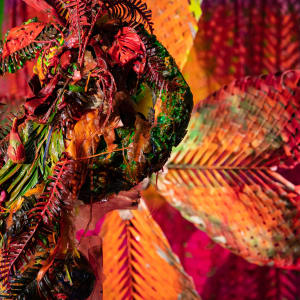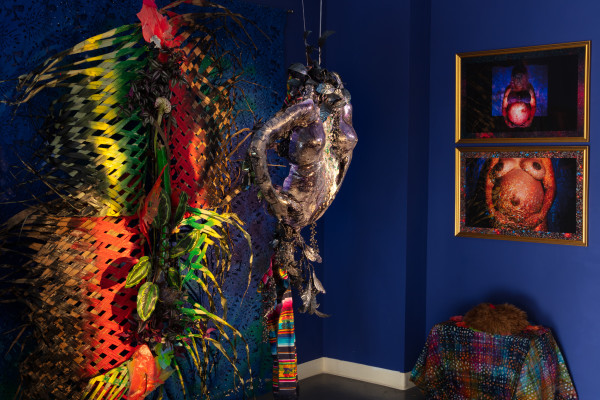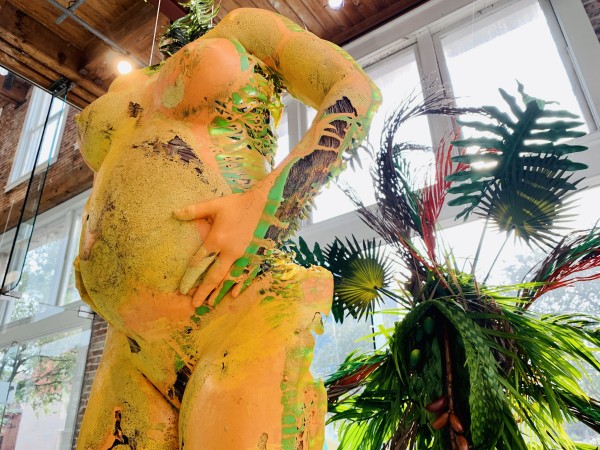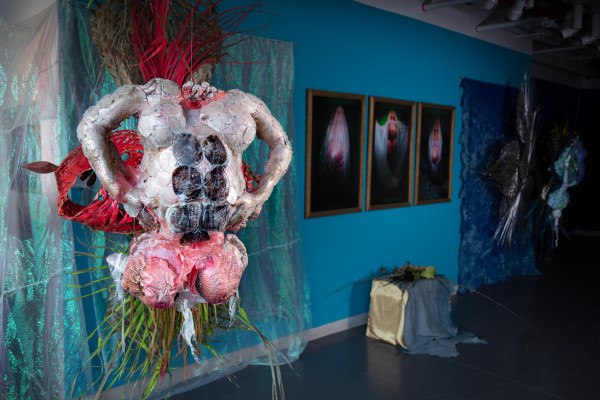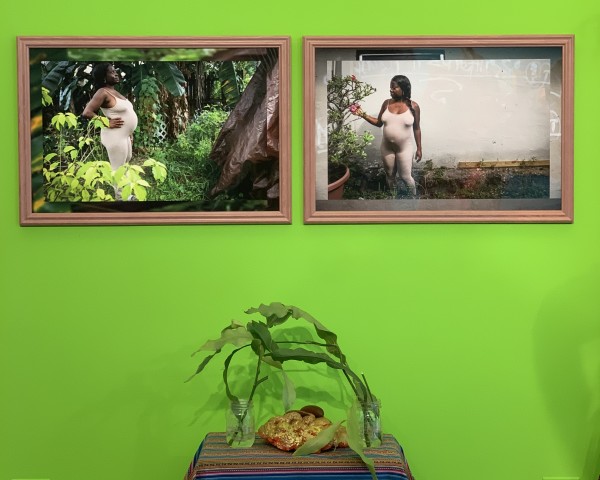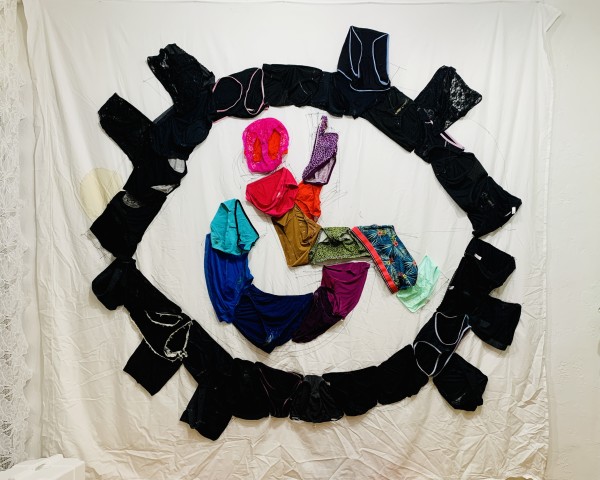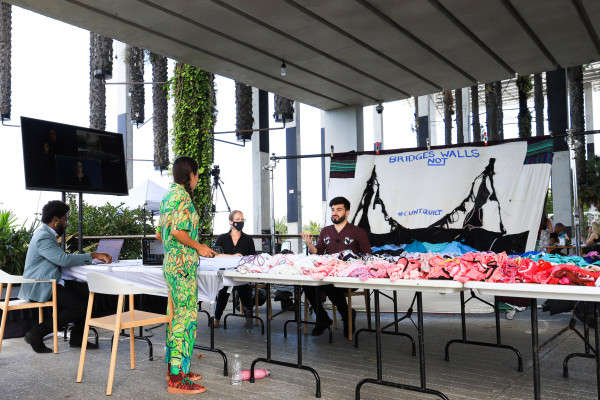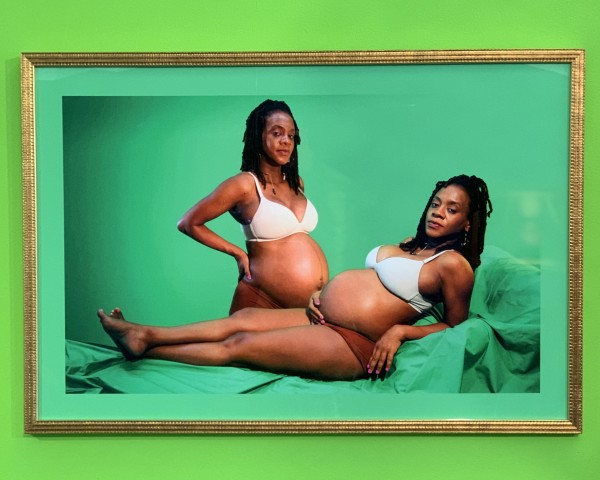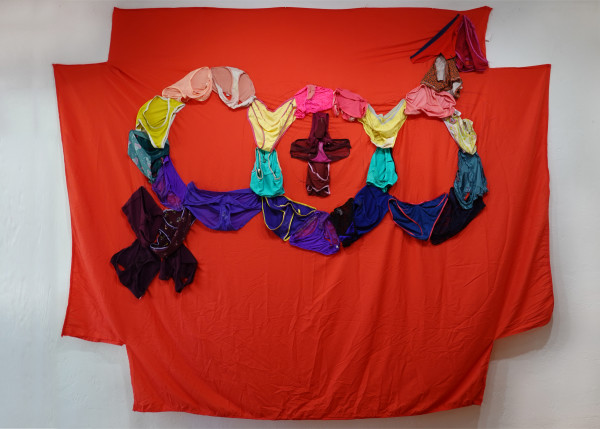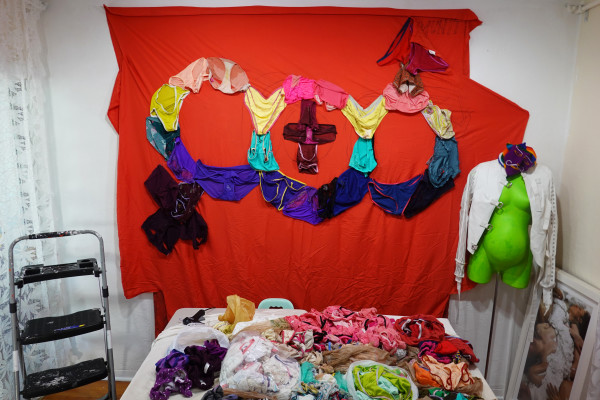Materials: neon spray paint, phosphorescent powder, neon powder, floor resin, wall insulation foam, interior latex house paint, metal wall lathe, tropical flowers, cast jackfruit, air plants, plastic funerary plants, woven palm fronds, African style guipure lace fabric made in China
Fruta Extraño (After Neon Colored Girls) engages with the resistance traditions and methods of survival and agency building in ancestral birth practices performed by doulas and midwives of precolonial cultures. Beyond the surface of the resin cast pregnant body, the insulated foam takes the shape of a jackfruit. Jackfruit sap is used in ancient reproductive medicine to induce labor (nature's pitocin), can be applied as a coagulant to treat wounds, or in certain doses, used to abort a fetus. Extending the gestational power of the Linea Negra depicted as a cobalt paint splatter along it's dividing hemisphere line, the sculpture reclaims vernacular portraiture and ancestral narratives to empower polychromatic Global South communities.
The work's title Fruta Extraño (After Neon Colored Girls) celebrates resistance media across colors and solidarity traditions. Translated directly from Spanish as "Strange Fruit", the revolutionary song was written by Jewish philosopher Abel Meeropol in reference to the mob lynchings of African Americans in Indiana 1930 . The song was popularized by Billie Holiday's performance and maintained by Nina Simone's 1965 protest tribute. Honoring Carrie Mae Weems' Neon colored girls photography series, the title is a navigational GPS for BIPOC survival.
- Subject Matter: Pregnant Figure
- Collections: Mother Mold monuments

